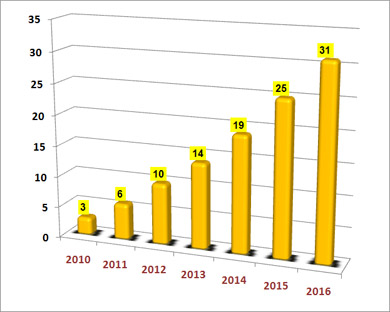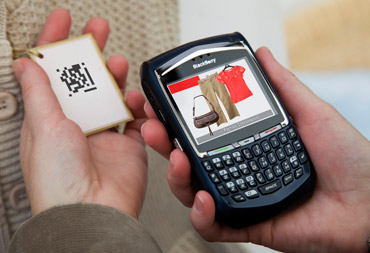The expansion of wireless communications services and ubiquity of mobile devices alter the retail landscape, creating an array of opportunities for merchants. An increasing number of retailers launch mobile sites and apps, which leads to the proliferation of mCommerce sales.
The quantity of people using web-enabled handheld devices is growing, creating new opportunities in retail software development. This implies that shoppers can be engaged wherever they are, both in the store and out of the store. According to Euromonitor International, world Internet retail sales are expected to expand by 62.6% in real terms over 2011-2015, making up 60.6% of total non-store retail sales by 2015. If we look at the US market, Forrester forecasts that mCommerce in this country is expected to reach $31 billion by 2016.
In addition to that, 56 of the top 100 retailers in the US in 2011 already had an Android, iPad, or iPhone mCommerce application. However, mobile commerce is typical not only of big brands with huge budgets. Both large and small merchants can harness the mobile channel without incurring heavy costs.
Mobile technologies to a great extent augment the traditional shopping experience. Consumer mindsets and expectations today are that they should be able to find and purchase anything with the help of a smartphone or a tablet. Many retailers often start with a mobile-optimized web site to reach the audience and then develop rich apps for iPhones, Android-based devices, other smartphones, and tablets. The sophistication of such apps can range greatly: from basic store finders and deal-of-the-day tools to engaging, interactive platforms that immerse consumers deep into the brand experience.
Therefore, mobile devices can be considered as a browsing channel and as a transactional channel. For a growing number of consumers smartphones and mobile apps are turning into real shopping companions. Consumers can use them to scan QR codes in catalogs and retail stores and get product information, read ratings and reviews, compare prices, check for promotions, as well as make purchases. In addition to that, retailers nowadays implement in stores NFC-based (near field communication) mobile payment terminals.
The beauty of mCommerce is that retailers can leverage mobile solutions to increase sales and customer loyalty, and also use consumer analytics to get a better understanding of shoppers’ interests, desires, and buying behavior. For these purposes, mCommerce professionals at retail companies cautiously consider many questions, such as how many devices to bet on, whether to partner with third parties, what functionality should apps have, how to effectively integrate mobile solutions into store operations, and what is the impact of mobility on overall sales.
Furthermore, the most innovative retailers are engaging their consumers inside social networks with promotional activities and other strategies that build loyalty and goodwill. The data exchange between retailers and social networks can bring merchants business-critical information and offer new insights into the psyche of shoppers. Some researchers predict that by 2015, circa 50% of the leading retailers will be creating and executing real-time personalized offers for their best consumers.
In order to keep customers engaged, merchants need to provide them with value, convenience, and innovation. This can be achieved with the help of mCommerce, which is expected to further stimulate the development of the retail industry.
Industries and Technology Areas:
Industries: retail, mCommerce, online shopping
Technology Areas: mobile app development services, smartphones, iPhone, iPad, iOS app development services, Android app development services, BlackBerry, Windows Mobile, tablet, PDA, NFC, QR codes
Related Cases: Exploring Innovative Retail Solutions
Retail Investors Platform Development
Matchmaking Platform for Artisan Retailers in Germany











